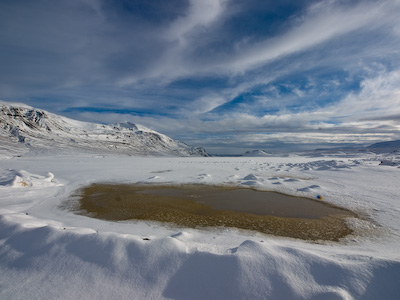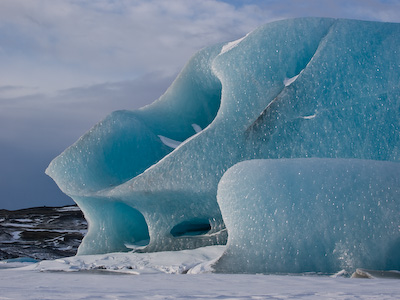In April of this year I spent 3 weeks traveling around Costa Rica. Although it was not specifically for photography, quite a lot of photography got done - both by myself, and my long-suffering better half.
Costa Rica came on my radar thanks to one of Michael Reichmann’s video journals, and it has been high on my wish list for quite a while. I’d never really photographed in sub-tropical conditions before, apart from a trip 10 years ago to Venezuela, but that doesn’t really count. Costa Rica is challenging in a number of ways. First, there’s the heat and humidity - although sometimes it’s not so hot, and sometimes the humidity gives way to torrential rain. Then there’s the sheer range of subject matter, with fast and slow moving wildlife of all sizes, landscapes, people, and all of these in often tricky lighting situations, especially in rainforests. And of course there’s only so much you can fly with and cart around.
Hummingbird: Olympus E-3, Zuiko 50-200, f/3.5, 1/250sec, ISO 400, tripod
After a lot of indecision, my final inventory was as follows: Olympus E-3 body, Zuiko Digital 50mm, 12-60 SWD and 50-200 lenses, 1.4 Teleconverter, FL-36 flash with Better Beamer, an assortment of filters, including little used UV for protection and coping with condensation, a Gitzo Traveller lightweight tripod, and Ricoh GRD II compact. Remarkably this all fitted comfortably into the lower section of my new Kata backpack. In turned out that the vast majority of the time I used the E-3 / 50-200 / teleconverter combination. The tripod was rarely used.
Lizard on palm: Olympus E-3, Zuiko 50-200, f/4.5, 1/1250sec, ISO 800
Clearly a big issue here was going to be the (lack of) high ISO performance of the E-3, but this has to be considered against the versatility of the lens combos, the very good in body stabilisation, very effective dust shaker and highly dependable weather proofing. And actually, the high ISO performance isn’t so bad as web forum armchair experts would have you believe.
Rainforest photography is tricky, as light levels are wildly variable, but generally low on the forest floor. This meant that handheld I was at very best at 800 ISO, more often at 1250 or 1600 with an absolute maximum aperture of f/8 with the 50-200 / 1.4TC combination. This is one of those times when the claimed “lack of depth of field” - by which critics claim the 4/3rds system cameras have too much DoF - turns into a major advantage, because when you’re trying to capture wildlife using a focal length of 280mm you need all the DoF you can get.
Forest detail: Olympus E-3, Zuiko 50-200, f2.8, 1/100sec, ISO 800
At 1600 ISO, noise clears up nicely using Nik DFine 2.0, at fairly subdued settings. Below that, if the exposure is ok, noise really doesn’t tend to be much of an issue, especially in prints.
In most cases, missed shots are my own fault, but I did lose a few, including one which would have been a 5-star, due to the 50-200 refusing to autofocus. Sometimes it just gives up, and only kicking it back into life with a twist of the focus ring, or in extreme cases, power on-off, gets it going again. It can be really frustrating. It isn’t the camera, as it does the same thing on the E-1, and I don’t think it is a fault specifically with this copy. I’m considering trading it in for the SWD version, hopefully that will be better. One thing that I would like to see on the 50-200 is a focus range lock, but I guess at the price that’s a bit too much to expect.
Young capuchin monkey: Olympus E-3, Zuiko 50-200, f3.5, 1/60sec, ISO 1600
I’m not a fanboy for any brand in any field, and I’d be the first to switch to a different make if there was a good reason, and I could afford it. But I have no reason to. So called “full frame” systems - Sony especially, for me - are kind of attractive, but honestly, if I’m going to get into that, I’d rather hold out for something like a Pentax 645D. Even while people are expressing doubts about the future of Four Thirds, it seems that with the maturing of sensor technologies it really is coming into its own. Actually it really occupies its own niche, way above small sensor cameras, way below full frame, and distinct from the sort of in-between, neither one nor the other APS-C systems. With Olympus Four Thirds you get beautifully built camera bodies packed with - in general - features that are actually useful for photography, and you get access to world-class lenses, and very high quality optics even at the entry level. And you get remarkable versatility. If you really get hung up on these things, yeah, you get more noise than larger sensor cameras, but honestly, if you are going to fret about that stuff, you’re probably not principally concerned about making photos. It is notable that there are considerably more “pro” or “serious” photographers using Olympus than is generally believed. The thing is they tend to just get on with photography and stay away from the fanboy-dominated gear forums (for example, Neil Gaudet, who’s blog I’ve just discovered).

Juvenile green iguana: Olympus E-3, Zuiko 50-200, f4.9, 1/320sec, ISO 800
I hope Olympus do release an upgrade to the E-3 - there certainly is scope for it, although beyond that I do wonder if we’ve reached a bit of a peak. The camera industry in general, at least at the DSLR level, seems to be coming out of the rapid obsolescence cycle it has been in in the last 6 or 7 years.
I’m sure I could have taken equally good (or rather “average”) photos with a different camera system, but I really doubt if it would have been quite so trouble-free and flexible.
Basilisk: Olympus E-3, Zuiko 50-200, f4.9, 1/320sec, ISO 800










